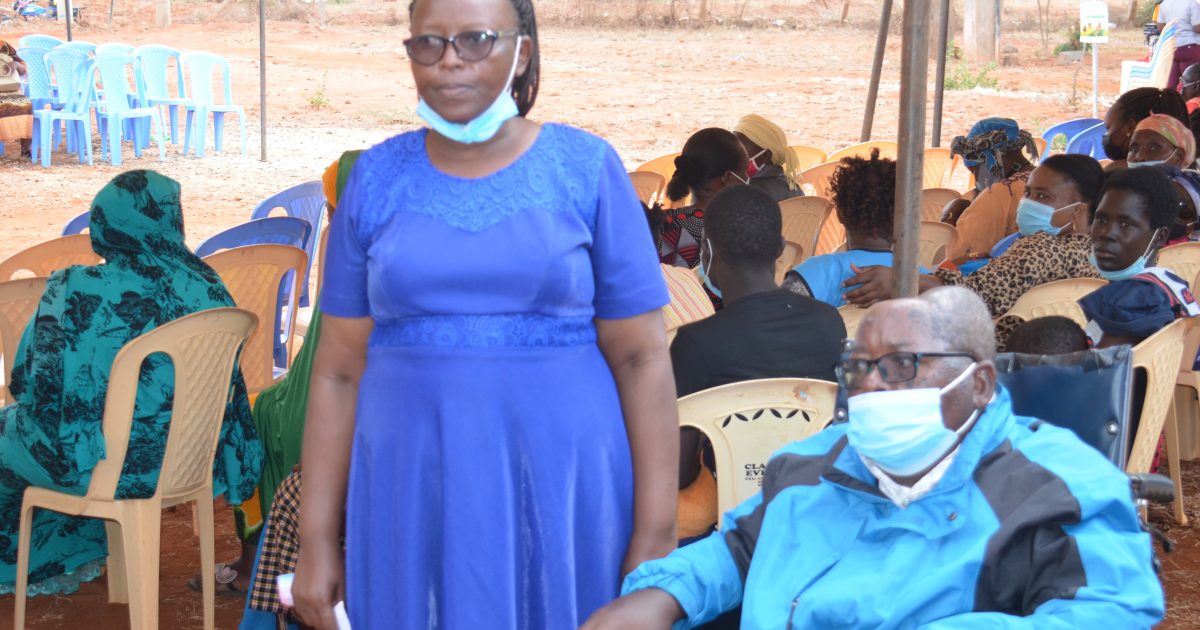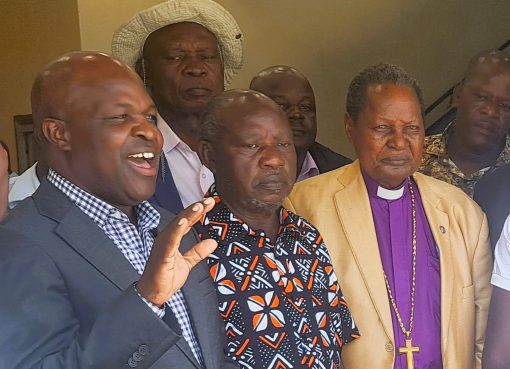He first collapsed in 1990. A dizzy spell while at the Teachers Service Commission (TSC) office in Wundanyi hit him violently and sent him crashing on the floor. Panicked colleagues resuscitated him and advised him to seek medical advice.
A hospital scan would later disclose the tumor nestling deep in his head.
“We went to Kenyatta National Hospital to have the tumor removed,” starts Ms Grace Mwabili with a distant look in her eyes.
At 60, her voice remains clear and steady. It does not betray the bone-deep fatigue that would see her juggle between caring for an ailing husband at night and reporting to school for duty at dawn for over two decades.
Her unwavering care towards Donald Mwabili, her husband, for three decades has the ingredients of a script fit for a heart-wrenching Mexican love story. It is a profoundly personal story; one of anguish and forlorn hope amid overwhelming sense of fear and despair.
It is also a testimony of undying devotion to a marriage whose bonds were forged by despair and strengthened within the sterilized walls of surgical theaters.
After the I990’s operation, she believed the worst was over. Had she been a clairvoyant, she would have known it was just the beginning of a painful personal odyssey marked by expensive operations that would haunt her marriage to date.
The multiple operations her husband would undergo; intrusive, agonizing but lifesaving, would see him suffer from temporal, but repeated loss of speech, impaired movements and overwhelming disorientation that lingers to date.
Still, true love reigns supreme. “I have never stopped loving him. He remains the man I married over 30 years ago,” she mumbles.
The first operation was a success, but had painful consequences. His left side became paralyzed. He could not use his left arm. Later, he was able to use one clutch that allowed him to resume work.
In 2000, ten years after his fall at work, he suffered the second bout of blinding headaches. He started losing balance and his disorientation intensified.
“We rushed back to the hospital. The scan showed the tumor had recurred,” she adds.
The news was devastating. No one had alerted the family of a possibility of the tumor growing back. Still gripped by disbelief, the family listened in shock as doctors talked of a second operation.
“I cried myself dry. How could the tumor be back? My biggest fear was whether he would pull through,” she says.
The echo of that ancient fear lingers in her voice. Her husband would pull through but at a heavy cost; his left side became too weak. She hoped this was the last time he was having a surgical operation but like the first time, she was wrong.
The headaches struck for the third time in 2010. The chill that fell over her family whenever headaches resurfaced came back full force. She knew. They were terrible harbingers of an issue they fervently wished to forget.
“The tumor was back again; this time worse than ever. It had even moved to the right side of his head. The doctors were wary of this operation but it had to be done,” she narrates.
Incredibly, she remains dry-eyed; a testimony to the steel nerves that sustained her through the hallowing ordeal of seeing her husband wheeled in operation rooms for multiple surgeries. The third operation confined him to bed for months. He lost his speech and sense of balance.
As if that was not bad enough, more complications arose. The operations had weakened the bones in his head and part of his cranium had become diseased.
“The operations had interfered with the integrity of the cranium. The head bones were suppurating. The damaged parts had to be removed.”
In 2011, he underwent a procedure to remove the diseased bones of the cranium. The discharge did not stop. He went back to the theater again to remove the entire upper part of his cranium.
“He has no bone on the upper part of his head. We declined the idea of an artificial plate because of the risk of incompatibility. If his body had rejected the plate, it would mean another operation to open up his head again,” she said.
After this procedure, he lost his speech and ability to move. Later, limited speech capabilities returned and so did minimal movement of the hands. However, he lost his sense of balance.
“He can neither sit, sleep nor stand without support but that is a non-issue. What I care about is that he lives and can say a word or two. His memory is back and he can recognize me. It has not been easy but 30 years of watching him enter and leave operation theaters for head operations and coming out alive is a miracle,” she says.
Ms Mwabili, a retired teacher, says she ignored rumors and speculations on what could be ailing her husband.
“After the tumor grew back, people said it was witchcraft. I was advised to find a witchdoctor. I never did. Prayers and obeying the doctors saved my husband’s life,” she recalls.
Currently, her husband is on home care under anti-convulsions drugs. His blood pressure is being monitored by medics at Moi County Referral Hospital. The family is hoping he will regain his abilities to use his limbs.
Brain tumor experts say superstitions on tumors are misleading. Dr Parmenaus Okwemwa, a consultant neuropathologist, states that tumors are medical conditions that have nothing to do with witchcraft.
The doctor, who chairs the Brain Tumor Association of Kenya (BTAK), adds the biggest challenge to early detection is lack of information on tumors. He adds that people associating tumors with bewitching are not likely to go to hospitals for proper diagnosis.
“This has nothing to do with witchcraft. Any such swelling needs to be properly diagnosed for treatment to start early,” he explains.
He also notes that currently, NHIF covers the cost of such procedures for patients who need surgeries. Ms Mwabili agrees and says NHIF covered most of the cost except for medicines.
“It helped a lot. The card (NHIF) covered the surgical operations and we only bought drugs,” she said.
The country has an acute shortage of experts in brain tumors. There are less than 80 neurosurgeons and neuropathologists in Kenya. Nearly all are based in Nairobi. To address this challenge, the association has launched county outreach programs where the neurosurgeons will train medical workers in county hospitals on diagnosing tumors.
Dr Tracy John, a consultant neuro-surgeon and BTAK Deputy Secretary General, says medics are the first point of contact with a patient which is vital in identifying patients with possible tumors.
“We are promoting Continuous Medical Education for staff in hospitals as a way of strengthening the detection of tumor cases. Cases identified can be referred to experts who will determine if it’s cancerous or benign,” she explains.
The association is holding camps in all the 47 counties to conduct free screenings for tumors as part of creation of awareness on brain tumors.
By Wagema Mwangi





